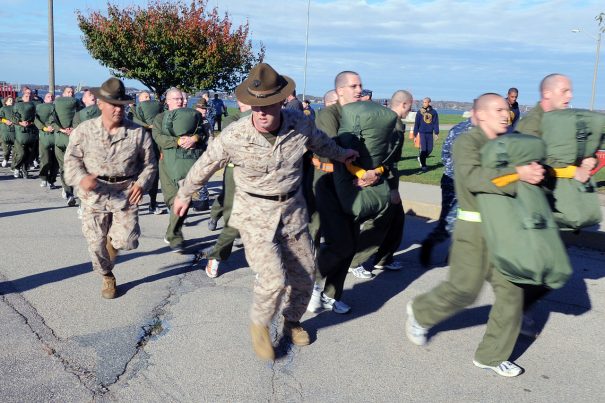
5 reasons why the military’s duffel bag is perfect for bugging out
Tuesday, April 18, 2017 by JD Heyes
http://www.depopulation.news/2017-04-18-5-reasons-why-the-militarys-duffel-bag-is-perfect-for-bugging-out.html

For those of us who have been in the military, the duffel bag (in Army vernacular) or sea bag (in Navy vernacular) was something we became very familiar with. In fact, duffels were among the first pieces of gear issued, and the reason became very clear: You needed them so you could stow all of the additional gear being issued to you as you shuffled through, assembly line style, on your way to the barracks and boot camp.
Once filled, we strapped the duffel to our backs and marched – sort of – to our new homes for the next several weeks.
To this day, many of us still have our initial duffel bag with our “last four” – the last four digits of our Social Security number – stenciled on it, along with our last names. But along the way, most of us also picked up a couple more, as we were issued even more gear as we were sent overseas to fight against those who support terrorism. (RELATED: See Inside An Actual Bugout Bag And Learn What You Will, And Will Not, Need To Take With You)
In the years since I have personally kept most of mine, and still use them in various capacities to hold gear and other necessities not only for survival and self-defense, but also for various other household uses. In addition to holding camping gear, often I have found that they come in very handy for use in travel, especially if I’m going to be somewhere for a week or more, rather than a standard suitcase.
That said, there are other important reasons why you should consider military duffel/sea bags if you’re planning on bugging out when stuff hits the fan (and given the state of our politics and our world, it seems more and more likely every day that something will happen to threaten our civil society).
Here are five reasons why duffels make the perfect bug out carrier (H/T Survival Life):
— They are very inexpensive: Not only are they readily available at any local military surplus store, they are extremely affordable. The duffel bag is standard issue piece of gear, so they are extremely plentiful (which also helps keep the price down). If you’re alright with a used duffel – and you should be if it’s still in good shape – you can usually get one for under $20. Imagine if you spent $100 on bags; that gives you five massive storage containers for all sorts of gear, clothing, blankets, shelters and more.
— They are large: If you’ve never seen a military duffel bag, one of the things you’re going to be most impressed by is its sheer size. Remember, it’s standard issue military gear and they were designed to accommodate lots of gear and clothing as troops and sailors were sent off to war. The bags are about 34 inches long (nearly a full yard) with 15-inch openings; on many occasions, I could stuff nearly 75 pounds’ worth of stuff in one bag alone. Tip: The military also issues what is known as a “willie-peter bag” – which stands for waterproof. Use this smaller bag to store things that need to be kept dry; they fit nicely in duffel bags.
— Easy carry: There are two ways to carry duffels – on your back using the two heavy-duty, adjustable carrying straps, or like a suitcase, using the reinforced carrying handle. If you’ve got the strength for it, you can actually carry two fully-loaded duffels, either using the carrying handles or strapping one duffel to your back and the other duffel on your front. If you’re really into it and strong enough to do so, you can even manage three of them; one to the front and two on your back. The point is, you can move a lot of stuff with just a few of these bags. (RELATED: Review: How To Pack Your Bugout Bag Like A Boss)
— Heavy-duty and built tough: Plus, military duffel/sea bags are built extremely tough; they have to be, in order to hold so much gear. They are made of ultra-durable canvas with reinforced, heavy stitching. And remember, some guys and gals who were issued their duffels years ago are still using the same ones. That should tell you all you need to know about longevity.
Finally, they are very portable; use it as your go-to bug out bag that you keep at home or in your vehicle.
J.D. Heyes is a senior writer for NaturalNews.com and NewsTarget.com, as well as editor of The National Sentinel.
Sources:
Tagged Under: Tags: bugout, duffel bag, military, sea bag





